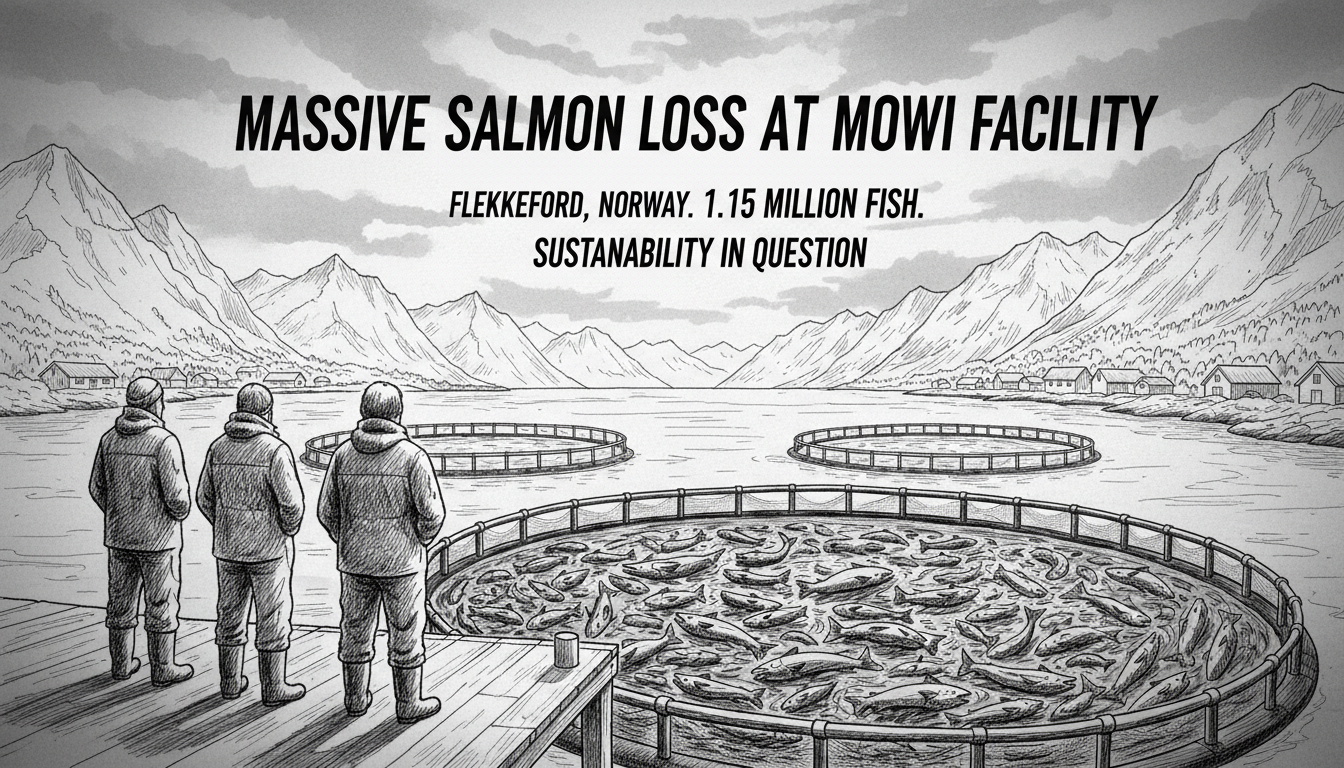A major salmon mortality event has struck Mowi's fish farming operation in Flekkefjord, Norway. Initial estimates suggested nearly 200,000 dead fish. The actual death toll now reaches 1.15 million salmon.
The fish weighed between 1-3 kilograms each. This represents approximately 15 percent of all salmon at the facility. The company reported the incident to the Norwegian Food Safety Authority.
Mowi suspects multiple factors caused the mass mortality. The primary causes appear to be compromised gill health combined with algae or jellyfish in the water. Oxygen level fluctuations also contributed to the catastrophic event.
The financial impact is substantial. At market prices, the lost salmon represent between 150 to 200 million Norwegian kroner in value. This incident ranks among the larger aquaculture losses in recent Norwegian history.
Norwegian fish farming operations face constant environmental challenges. Water quality changes, algal blooms, and temperature shifts can quickly threaten fish health. The industry employs extensive monitoring systems to detect such threats early.
Why does this matter for international readers? Norway supplies nearly half of the world's farmed Atlantic salmon. Major production losses can affect global seafood markets and prices. Consumers worldwide might see price changes for salmon products in coming months.
This incident raises questions about aquaculture sustainability. Fish farming provides crucial protein for global markets but faces environmental pressures. Companies must balance production growth with responsible environmental management.
What happens next? Norwegian authorities will investigate the exact causes. Mowi will assess its prevention measures and recovery plans. The company must address what went wrong and how to prevent similar events.
The Norwegian seafood industry has faced criticism about environmental impacts. Events like this fuel debates about industry regulation and expansion limits. Norway continues working to make aquaculture more sustainable while maintaining its position as a global seafood leader.
For local communities, such incidents affect employment and regional economies. Fish farming provides important jobs in coastal Norway. Production losses can have ripple effects beyond the immediate financial impact on companies.
The industry has made technological advances in recent years. Better monitoring systems, feeding technology, and disease control have improved operations. Still, nature presents challenges that technology cannot always prevent.
This event shows the vulnerability of food production systems. Climate change may increase such incidents as ocean conditions become more unpredictable. The aquaculture industry must adapt to changing environmental realities.

